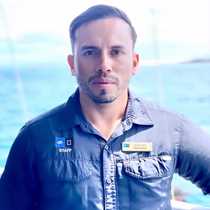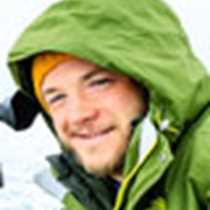We woke up early in the morning to search for cetaceans along the waters of western Isabela Island. As we explored, we spotted a couple of Minke whales in the far distance. We encountered the whales a bit closer eventually, and were able to confirm the species of marine mammal we were looking at.
After breakfast, we had a dry landing on the youngest of the Galapagos Islands. This time, walking among the lava fields of Fernandina Island. This was like traveling millions of years back in time to see the one of the pristine islands in the tropics. All species we encountered on the trail were either endemic or native. Within the tide pools, we encountered a few female Galapagos sea lions with newborn pups, as well as older pups playing in the shallow waters, waiting for their mothers to come back from their fishing outings. We were lucky to spot a young Galapagos hawk perched on the mangrove trees; this was a very relevant sighting since this raptor is the top of the food chain on land in Galapagos.
Several flightless cormorants were spotted on the lava fields; some drying their wings, others just coming back from their fishing outings. What an incredible hike we had during the morning outing.
After the hike, we suited up and got ready to head on a snorkeling outing along the coast of Punta Espinoza. During snorkeling, we encountered several pacific green sea turtles and a few marine iguanas feeding on the green algae growing on the underwater lava beds along the coastal area of Fernandina.
After lunch, we headed on a Zodiac ride along the coast of the Northern side of Isabela Island. During the ride, we spotted several Galapagos penguins; some fishing on the surface of the ocean, others perched on the lava rocks. A few blue-footed boobies were spotted resting on the cliffs, as wells as brown pelicans drying their feathers. A few pacific green sea turtles were seen on the surface of the ocean as well as a small colony of Galapagos fur seals among the rocky cliffs. After the ride, we had a celebration as we crossed the Equator.









